Should I use Linux desktop KDE or GNOME?
One of the coolest things about Linux is that what you see on your screen is not always the same as what you see on someone else's screen. The interface, the way you interact with the PC is often completely different even though both of you are using the same operating system.
Windows and macOS both have just one interface or desktop environment, while Linux has many, and two of the most popular Linux desktop environments are KDE and GNOME. So which option is right for you? Let's find the answer through the following article!
User interface
The KDE community calls their desktop Plasma. Plasma defaults to a Windows-style layout that may be familiar to many people using Linux for the first time. The App launcher is accessible from the bottom left, apps appear in a panel along the bottom edge, and system indicators are on the bottom right.
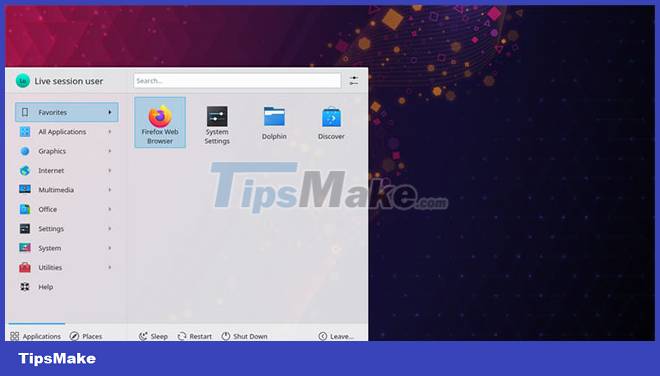
KDE applications have minimize, maximize, and close buttons on the title bar. Below that, you'll find menu bars in many (but not all) programs designed specifically for KDE.
For GNOME, the community has spent more than a decade developing its own unique interface and design language, centered around the Activities Overview, a single location where you can search for files or applications, View open windows and navigate the workspace. You zoom into the workspace when you're ready to use an open application and zoom out into the Activities Overview to get an overview of all you're doing and to start working on something else.

GNOME applications do not have minimize or maximize buttons. This minimalism is shown everywhere. GNOME developers are of the opinion that any additional option or button will cause some undesirable result for both the developer and the user. Therefore, GNOME applications tend to be simpler, dedicated to performing single tasks as intuitively as possible.
Customizability
KDE Plasma is arguably the most customizable graphical user interface available for any desktop operating system. Without having to install any special software or edit any lines of code, you can adjust almost every aspect of the desktop interface.
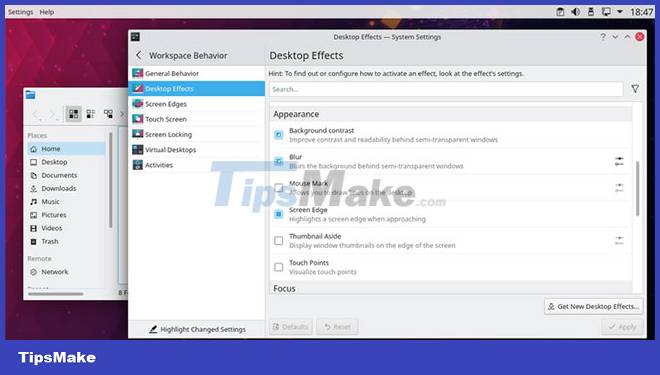
Example edits include changing the size and position of the panel, the widgets that appear on the panel or on your desktop, the theme, the buttons that appear in the application title bar, and the fonts. , app icon and app name in app launcher.
GNOME is not customizable like KDE. Even basic customizations, such as changing system fonts, require installing GNOME Tweak Tool, rather than searching in system settings.

But GNOME has a set of extensions, similar to what you find in web browsers. With these extensions, you can fundamentally change the way your desktop works. If you want the dock to always be visible, there is an extension for that. If you really want to keep a Windows-style workflow, there's an extension to do this too.
To use GNOME extensions, you must know that they exist and where to find them. In contrast, KDE brings add-ons directly to the desktop. You can install themes, wallpapers, screen effects, etc. just by clicking the Get New button that appears in the system settings.
Applications
Most people are a big fan of GNOME's design language and nearly every application is designed specifically for GNOME. If you want to write an article, you can use the Apostrophe markdown editor. For those who want to manage photos, gThumb will be the right choice. For most users, GNOME software focuses on what is needed in a way that helps them stay focused on the task at hand.

However, although many users prefer GNOME applications, there is no denying that KDE has a more powerful selection of software and options to choose from. GNOME doesn't have a powerful photo manager like digiKam or a comprehensive video editor like Kdenlive. KDE's Krita has become a go-to illustration tool for people who have never used Linux.
KDE also has many suitable software, such as Marble for observing planets and KStars for star gazing. You can find a complete list of KDE software at apps.kde.org.
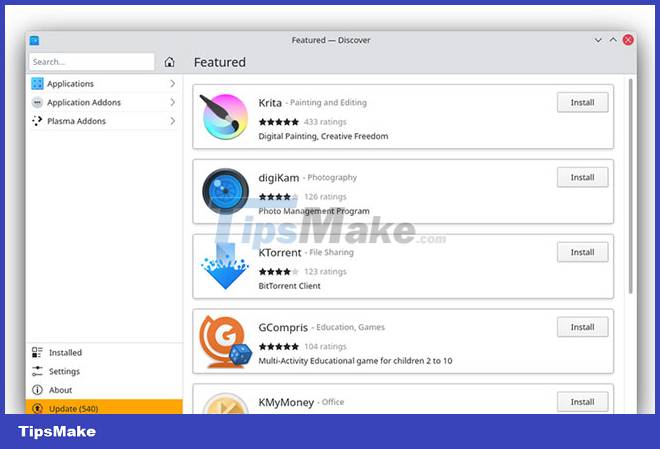
With KDE, you can start customizing applications to your liking - hide menu bars, adjust display panels, and tweak this and that.
There's no way to design an app that works for everyone. GNOME takes a consistent approach to application design. KDE leaves more decision-making power to the user.
Default utility
The default programs on your DE determine the type of work you can do with your computer. To that end, both KDE Plasma and GNOME provide everything you need for basic computing tasks. These include powerful document readers like Okular, as well as media players and web browsers.
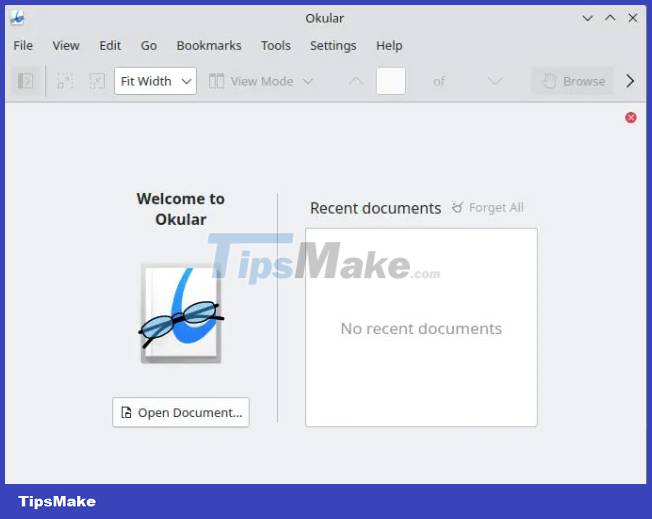
Additionally, KDE Plasma includes additional third-party programs, such as LibreOffice, as part of the default setup. This means that starting to use KDE as a desktop is often easier than GNOME.
KDE Plasma is the best choice if you are looking for a DE with a large library of applications available out of the box. GNOME is a good choice for users who want flexibility with the type of programs they install on their machines.
Ease of use
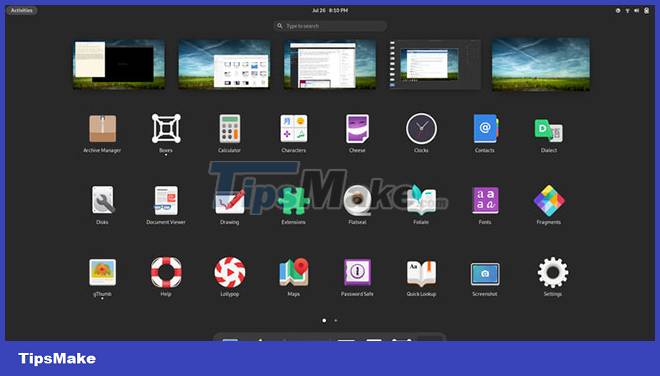
Which desktop environment is easier to use partly depends on your expectations and current technical level. For those already familiar with Windows, KDE Plasma can provide an easier transition.
On the other hand, many people have always found Windows and traditional desktop interfaces very complicated and confusing.
GNOME's design language is close to what many of us have experienced on our phones and tablets. That means GNOME is relatively easy to use regardless of whether you've ever used a computer or not.
GNOME also places an emphasis on ensuring computing is accessible to as many people as possible, including not only a system settings area for accessibility, but also consideration of accessibility issues. accessed within the design language of the applications themselves. But thanks to Plasma's sheer customization capabilities, there are a number of ways you can tweak KDE to suit your needs, something you can't easily do on GNOME.
GNOME lets you perform most tasks from a single location, the Activities Overview, which you can quickly activate by moving your mouse to the top left or pressing the Super key. Launching an application or switching to an open window is as simple as pressing the Super key, entering the first few letters of the application name and pressing Enter.
Functionally, KDE can do the same thing, but the features are spread out between the app launcher, dashboard, various widgets, and KRunner (activated by pressing Alt + F2).
There is a downside to GNOME's approach. The Activities Overview can zoom in and out - it's something you'll probably interact with often. This movement can cause physical strain for some people, who may find the relatively static nature of the Plasma desktop easier to handle for this reason.
In general, GNOME offers fewer options, which reduces complexity. Not only do KDE menus display a wide range of features, but the way they display settings is less than consistent. Some apps have menu bars, some have hamburger menu buttons, and others don't.
System resource usage

Both desktop environments feel fast on modern hardware. Although KDE and GNOME both have their own pros and cons when it comes to user interface, there is one option that uses less system resources than the other.
That's KDE Plasma. There's a reason why both the Pinebook and Pinephone, two relatively weak ARM devices, come pre-installed with Plasma and Plasma Mobile. This is also a reason why KDE was chosen for Valve's Steam Deck. KDE Plasma even cuts down on some traditional desktop environments like Xfce.
Performance and responsiveness
How the desktop environment behaves with respect to actions can make or break your experience using it. A slow desktop will make even simple tasks frustrating and difficult to perform.
For that matter, both KDE Plasma and GNOME can load themselves within 4-5 seconds after a cold boot. Furthermore, both environments are also fast enough to respond quickly when you first log in to their desktops.
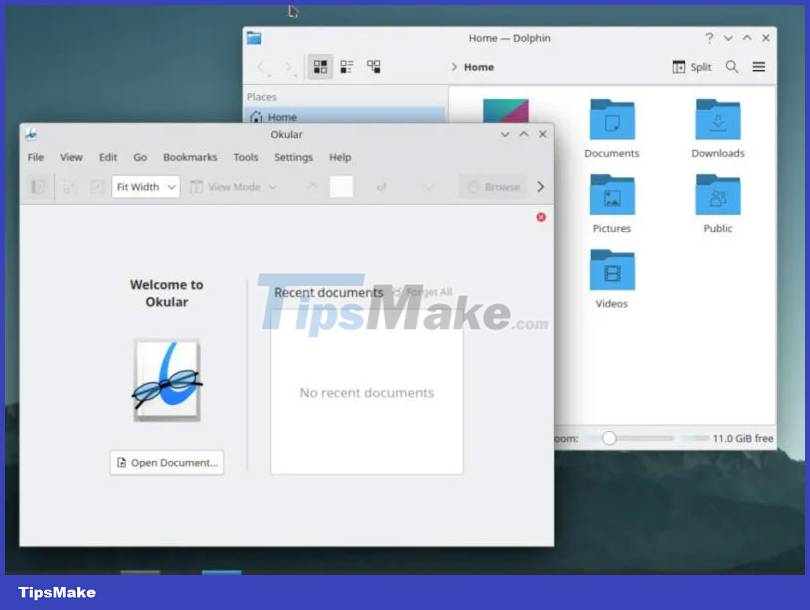
However, one of the biggest disadvantages of GNOME is its slowness when used long term. Although it has a similar boot time to KDE Plasma, the DE will gradually feel slower the longer you use it. From experience, this problem begins to occur after about 4 to 6 hours of continuous use.
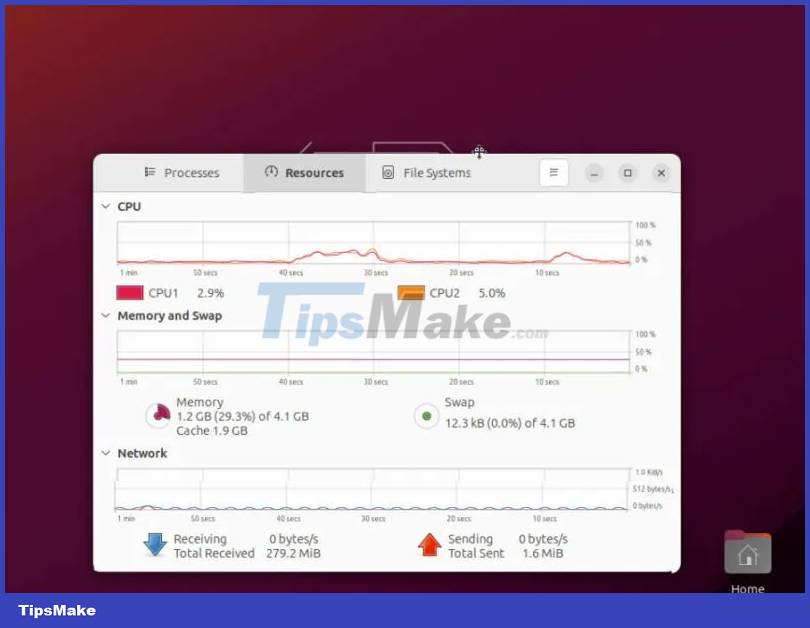
KDE Plasma outperforms GNOME in terms of performance and responsiveness. This is because it is more stable over long sessions.
KDE vs GNOME: Which is right for you?
Although both of these desktop environments offer many features to users, an experienced Linux user will definitely switch back and forth between KDE and GNOME a few times.
For those who aren't interested in tinkering with the desktop, GNOME is a better choice. If you are someone who likes to customize and control the appearance of your operating system, KDE Plasma is a suitable choice.
Ultimately, choosing between KDE Plasma and GNOME is a matter of personal choice. Each environment plays to its strengths and still has some features.
Let's use KDE:
- Once you get used to the Windows desktop.
- When you need a fast and responsive graphical environment.
- When you want to use KDE-specific widgets and tools for system administration.
Let's use GNOME:
- When you are looking for a macOS alternative in Linux.
- When you want an easy-to-learn environment for first-time computer users.
- When you want a DE with an extensible framework that doesn't break its design language.
You can really create some efficient workflows by adapting Plasma to suit your specific use cases and preferences. You can also make better use of your system resources. No matter which desktop you choose, you'll have access to some of the best software the Linux world has to offer.
You should read it
- Differences in the types of desktop environments on Linux
- 5 ways Librem 5 phones affect Linux desktop
- How to install GNOME on Ubuntu 20.04 LTS Focal Fossa
- How to use GNOME 45's new Activities indicator
- How to Install Gnome on Arch Linux
- Learn about Linux MATE desktop environment
- 10 reasons to switch to Linux right in 2012
- How to Change Themes on Ubuntu with Gnome Tweak Tool
May be interested
- Fedora 32 officially launched with GNOME 3.36
 fedora project has just released fedora 32 - one of the most popular and supported linux-based desktop operating systems available today.
fedora project has just released fedora 32 - one of the most popular and supported linux-based desktop operating systems available today. - 5 major developments in Linux desktop in 2022
 linux is the dominant operating system on servers, but it is less known as a desktop operating system. however, the linux desktop has come a long way in the past decade and the momentum is not slowing down.
linux is the dominant operating system on servers, but it is less known as a desktop operating system. however, the linux desktop has come a long way in the past decade and the momentum is not slowing down. - 5 ways to make Linux desktops look great
 various tools, tips and tweaks can be used to personalize linux desktops. use the following 5 methods to personalize your linux desktop environment.
various tools, tips and tweaks can be used to personalize linux desktops. use the following 5 methods to personalize your linux desktop environment. - The latest features of GNOME 40
 gnome 40 includes bold design changes and a host of new features. in this article, tipsmake will join you in reviewing the best features among them.
gnome 40 includes bold design changes and a host of new features. in this article, tipsmake will join you in reviewing the best features among them. - 5 reasons why Linux distros create their own desktop environment
 most of us don't think of the desktop as separate from the operating system. the desktop is what you see on the screen - as with windows or macos. on linux, desktop options are extremely diverse.
most of us don't think of the desktop as separate from the operating system. the desktop is what you see on the screen - as with windows or macos. on linux, desktop options are extremely diverse. - 5 reasons to use Linux desktop instead of WSL
 while wsl has made it easier for people who need to use both windows and linux on the same machine, there may still be reasons to use a real linux desktop on your computer.
while wsl has made it easier for people who need to use both windows and linux on the same machine, there may still be reasons to use a real linux desktop on your computer. - How to check the desktop environment you are using on Linux
 as you probably know, linux-based operating systems are heavily focused on the command line to perform operations. a minimal distro like arch linux will give you a dark terminal installation.
as you probably know, linux-based operating systems are heavily focused on the command line to perform operations. a minimal distro like arch linux will give you a dark terminal installation. - How to benchmark storage devices with Gnome Disk Utility
 gnome disk utility can play many roles. it can be a source of information for all storage devices, as well as a solution to back up and restore them from images.
gnome disk utility can play many roles. it can be a source of information for all storage devices, as well as a solution to back up and restore them from images. - How to disable automatic workspace in GNOME
 with distributions rolling out releases using the latest version of gnome 3, more and more users are returning to gnome and finding that it has been greatly improved, since the gnome project played. onions for the first time.
with distributions rolling out releases using the latest version of gnome 3, more and more users are returning to gnome and finding that it has been greatly improved, since the gnome project played. onions for the first time. - The 10 best features in GNOME 45
 the gnome 45 release is attracting a lot of attention, and the good news is that it's available in ubuntu 23.10, which launches next month.
the gnome 45 release is attracting a lot of attention, and the good news is that it's available in ubuntu 23.10, which launches next month.










 How to play Game Boy games on Linux Terminal
How to play Game Boy games on Linux Terminal How to use sed command in Linux
How to use sed command in Linux 5 reasons why people love the Linux command line
5 reasons why people love the Linux command line How to install Grafana on Alma Linux
How to install Grafana on Alma Linux How to use the Ping command in Linux
How to use the Ping command in Linux How to Customize Linux Terminal
How to Customize Linux Terminal